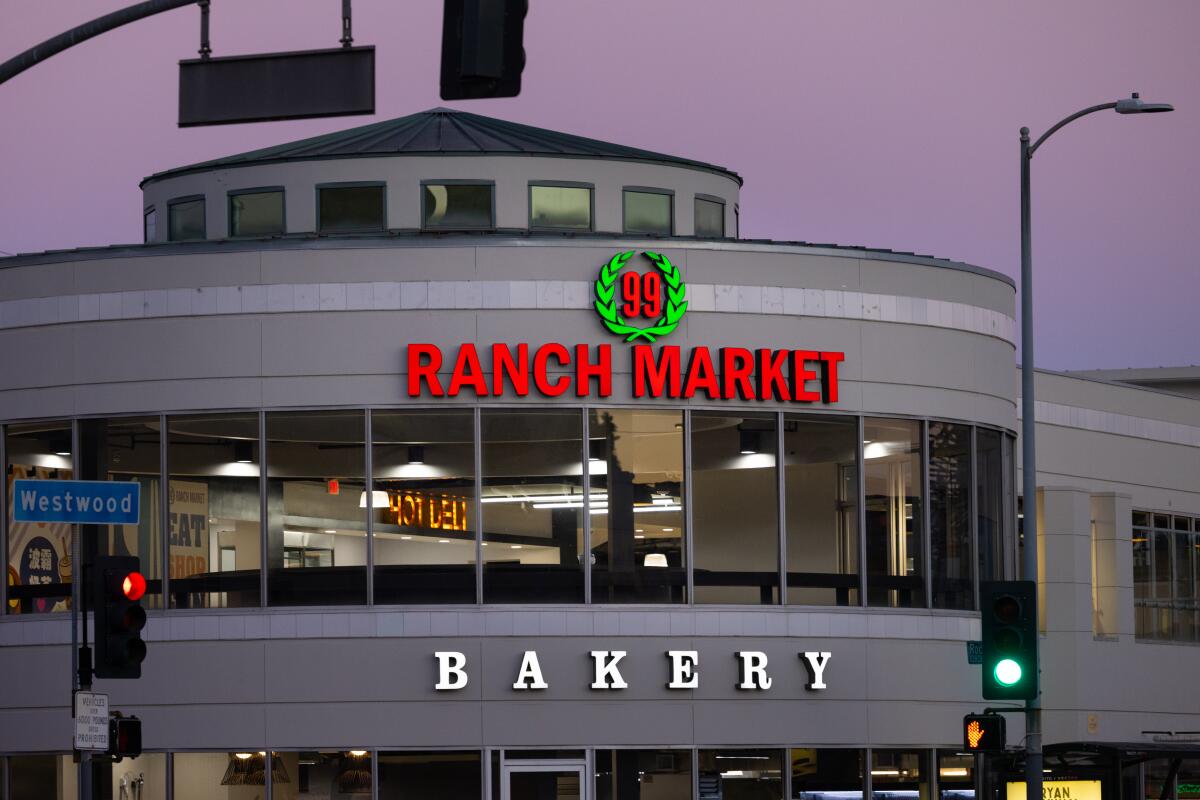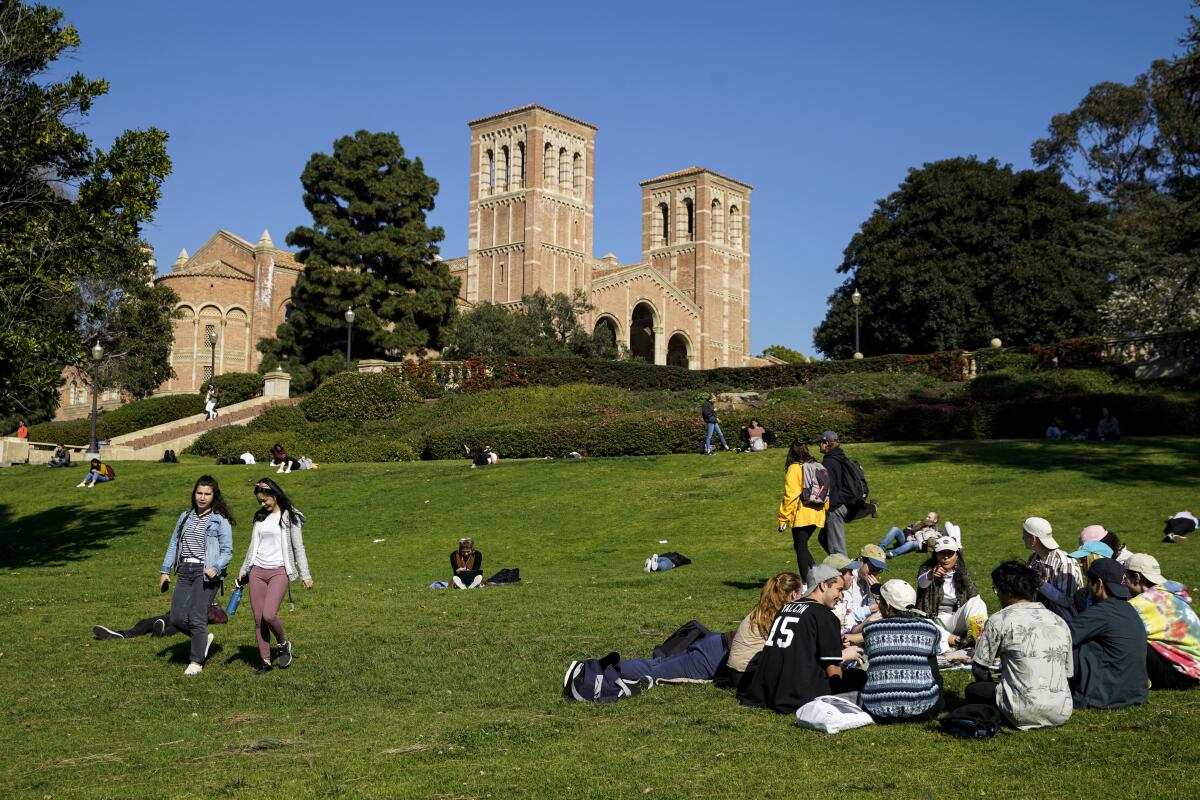A Chinese grocery store opening in West Los Angeles represents a cultural shift

- Share via
Most immigrant families face at least two commutes: one between work and home, and another, between home and the grocery store, to make a place smell, taste and feel like home.
My parents often drove three hours to find a 99 Ranch Market in Atlanta when we lived in Tennessee. As a second generation Asian American kid who grew up loving American food, I didn’t expect to join these pilgrimages when I moved to Los Angeles.
But these days I have embraced my mother’s food practices as the most tasty and economical way to feed myself. At least once a month, I trek from the Westside to the San Gabriel Valley in search of ground pork at $2 a pound, Taiwanese cabbage and a wider selection of vinegars and hot sauces.
So the news that a 99 Ranch was coming to Westwood was more than welcome. It was also somewhat destabilizing to the mental map I carry around in my head of where to get things in L.A.

Chinese food and groceries are so rare on the Westside that it’s become something of an urban legend. David Chan, a retired accountant and attorney who has eaten at and chronicled more than 7,000 different Chinese restaurants around the world, has been tracking the story since the 1990s.
“Back then, for any of us who worked or lived on the Westside, any SGV Chinese restaurant or grocery store would have been a dream come true,“ Chan said via email, referring to the San Gabriel Valley, a traditionally Asian enclave.
Up until the 1960s, when Chan was still a student at UCLA, most Westside neighborhoods were entirely white thanks to normalized and widespread housing discrimination. Chinese food in L.A., Chan said, was defined by Americanized restaurants such as Twin Dragon, Madame Wu and Jade West.
I think most of us now understand and acknowledge redlining’s effects, but our grasp of its history feels abstract to me. I don’t think we’ve really applied that knowledge to our understanding of the city and why it looks the way it does.
I certainly struggled to grasp that fact when I came to UCLA in 2006. The ugly secret behind the pleasant eccentricity of this city’s neighborhoods is discrimination. You can’t understand Los Angeles’ peculiar geography without understanding where racism found expression in property markets.

There’s a certain irony in 99 Ranch coming to Westwood. In 1939, the neighborhood was so blanketed with racially restricted housing covenants that Black students at UCLA could not join housing cooperatives unless they were considered domestic servants.
In 1943, officials in nearby Culver City organized an official “Committee on Segregation” that went door to door seeking promises to never sell or rent to Black people.
These commutes between home and the food that spells home to me have become a time honored ritual that I do not particularly resent. At the same time, I acknowledge that these journeys have been forced upon us. I believe many immigrants and people of color would not have moved to the suburbs if they had the same chances to make a life in the city.
Chan has chronicled multiple failed attempts by Chinese restaurant groups to reach Westside diners in the 1980s. There was Unicorn Inn in Venice, Oriental Seafood Inn in Marina Del Rey, Hong Kong Royale in Beverly Hills, Royal Star Seafood in Santa Monica, all shuttered after a few years.
Nothing changed until 2012, Chan said, when the restaurant ROC Kitchen opened, and suddenly there was a place to get soup dumplings west of the 405.
Though it’s tempting to believe Angelenos simply became more appreciative and educated about Chinese culture, Chan attributes the success of these restaurants to a critical mass of Chinese students at Los Angeles universities. Many of the first authentic Chinese restaurants on the Westside located themselves near UCLA and USC, near a captive audience that could appreciate regional Chinese food.
According to census data, Asian Americans accounted for about 11.2% of the Westside’s population in the year 2000, and that number has only grown.

A 2014 report found Los Angeles County was home to more than 20,000 Chinese international students at places like UCLA, USC and Santa Monica College. By 2020, Asian Americans accounted for about 14.5% of the Westside’s population according to American Community Survey five-year estimates.
These days, the Westside is no longer a “total wasteland” when it comes to Chinese food, Chan said. Several successful Chinese restaurants from the San Gabriel Valley have opened locations in Westside malls.
And the 99 Ranch store is in the final stages of city inspections, said marketing executive Emily Huang. They’ll announce an opening date when inspections are completed, and they hope to open the store before the end of the year, Huang said.
I’m one of the many Westside Asian Angelenos eagerly anticipating its opening, not just because it’ll cut my grocery commute by more than half. But also because it might signal a future where the borders of community will not be drawn so rigidly.
Sean Greene contributed to this report.
More to Read
Sign up for Essential California
The most important California stories and recommendations in your inbox every morning.
You may occasionally receive promotional content from the Los Angeles Times.














